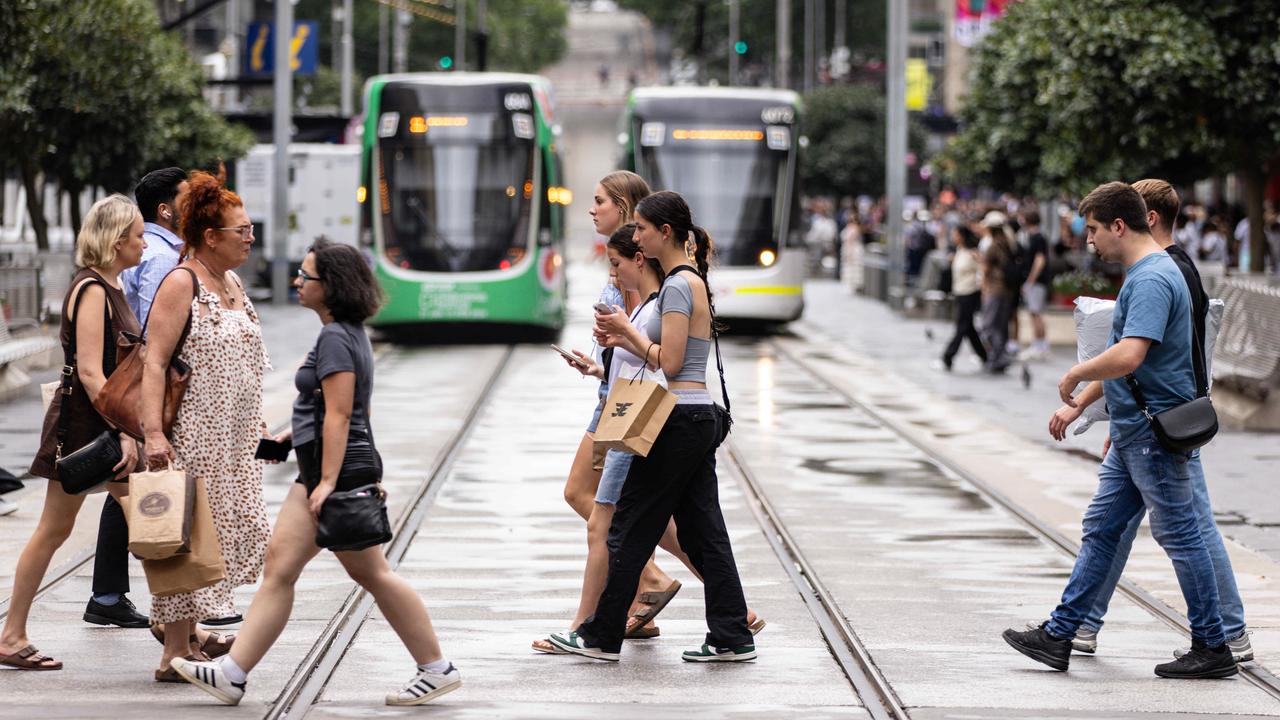Housing ‘gravesites’ become real estate gold
Aussies are cutting homes up and driving them hundreds of kilometres as they find ways to navigate the construction crisis.
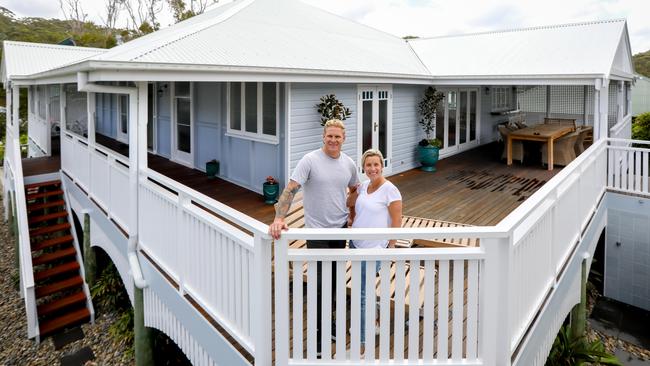
Home
Don't miss out on the headlines from Home. Followed categories will be added to My News.
UNWANTED homes sitting in housing ‘gravesites’ are becoming real estate gold for would-be homeowners who are facing up to a two-year building delay in the current market.
Houses as cheap as $60,000 are being snapped up by home buyers, cut in halves or quarters and transported hundreds of kilometres away to give buyers the chance to own their home sooner.
MORE HOME, DESIGN AND LIFESTYLE NEWS
“I would say since Covid that our business has doubled,” Mackay and Sons House Removals office manager Kristy Mackay said. “And our stock levels are very low. We’ve got 12 homes available for sale, the rest, and there’s at least 50 of them, are all sold and waiting for approval.”
The popularity of house removals received an extra push this year with the Channel 9 renovation series The Block transporting homes from Queensland to Victoria for the hit TV series.
While delivery times have blown out from three to six months due to increased wait times for architects and certifiers, Ms Mackay said buying an existing home and transporting it to a vacant block of land was still more cost-effective and timely than building new.
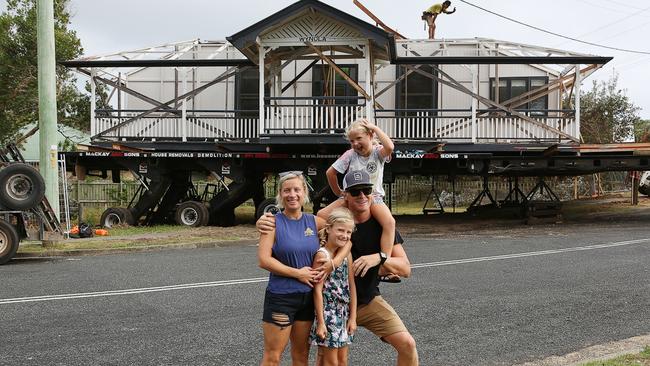
Bianca and Glen Wakelin found a century-old Queenslander at the Mackay and Sons’ Narangba depot, cut it into four pieces and drove it 700km to Boomerang Beach on the New South Wales’ mid north coast in an operation that involved four trucks, 23 crew and a dozen support vehicles.
“At one point, I really thought we were going to lose the house and it was like, ‘What have I done?’ But the guys were just amazing. It was like watching a jigsaw puzzle going together where, in the end, everything just fit,’’ Ms Wakelin said.
AT HOME MAGAZINE HAS MORE ON THIS AND OTHER HOME TRENDS. READ IT HERE.
Bianca (or Bee as her friends and family call her) had not even stepped foot inside the home when she and husband Glen decided to purchase it for their vacant beachside block on the New South Wales mid north coast some 700km away. In fact, they had travelled to Brisbane to look at another period home to relocate, only to find it was too big for their allotment.
On the way back to the airport, they stopped at another removal homes storage yard – or “gravesite’’ as Bee refers to it. Although closed for the day, the couple got their first glimpse of the grand 1920s Queenslander that, even in its rundown state, stood out as the perfect choice.
“It sounds like a cliche but I really did cry when I first saw it,’’ Bee recalled. “I just knew this was it. Glen flew back up (to Brisbane) again the very next day and Facetimed me during his walk through and we got it.
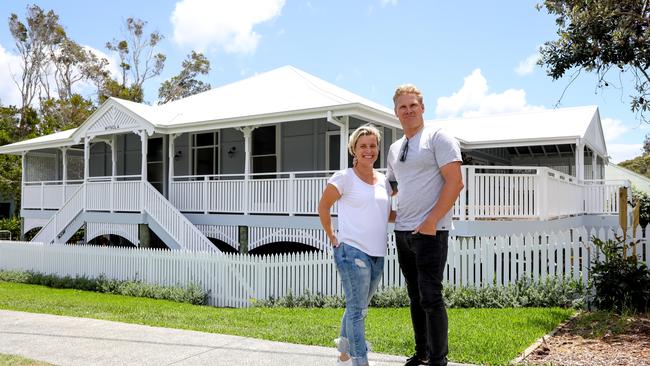
“Obviously, being a traditional Queenslander, it had the double butterfly stairs, it had the gables, it just had that very traditional look about it. It also had the features inside that we absolutely loved, like the original 1920s coal fireplaces and the timber floors.
“There were a lot of things that struck chords with us. I don’t think we it too much, we were just so determined to have this home.’’
Deciding to purchase the home, known as Wynola, was one thing but getting it to Boomerang Beach was another. It was the furthest that house removalists Mackay and Sons had ever moved a home – and also the largest house they had moved.
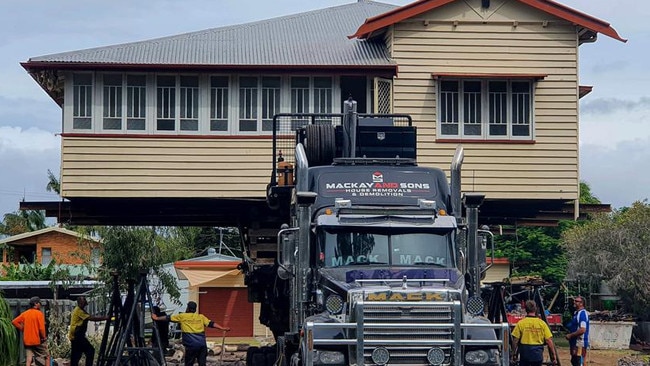
Bee constantly worried the home would not survive its lengthy journey but her anxiety hit another level watching as the house was squeezed into its new location and put back together.
“When it arrived, that’s when things hit the fan,’’ she said. “At one point, I really thought we were going to lose the house and it was like, ‘What have I done?’ But the guys were just amazing. It was like watching a jigsaw puzzle going together where, in the end, everything just fit.’’
The house sat on its new site for a year before Bee and Glen, along with children Kayla, now 15, and Ava, 12, got to work restoring it. The original exterior staircase, the only entry to the home, was deemed unsafe for use so it wasn’t until a new one was installed that Bee finally got to step inside for the first time. Recognising they were not yet ready to move from their current home, closer to Sydney, the family set about transforming Wynola into a beautiful, Hampton-esque type holiday let.
“It wasn’t so much a renovation as a restoration,’’ Bee said. “There were things we definitely had to redo to make sure everything was solid.’’
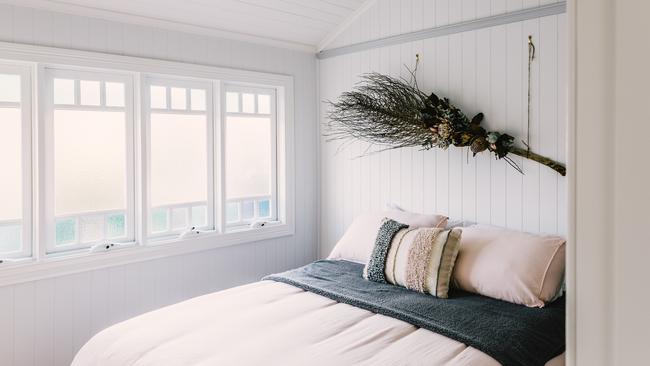
Sold as a three-bedroom home, Bee and Glen added a fourth bedroom and a second bathroom. The deck was extended to wrap around the entire house and the exterior, with its faded navy trims, was painted a soft shade of blue. Inside, the timber floorboards were polished, adding a lovely sense of warmth to what is now a mainly white colour scheme. Pops of colour came from lucky finds, such as a claw foot bath in duck egg blue. “I knew I wanted that Queenslander look but I wanted that coastal Australian look as well,’’ Bee said. “And I always considered the style of the home. I never bought things for my target market (as a holiday let) or anything like that – it was always the home speaking to me and choosing what it needed.
“I started reading Federation Queenslander books and going to all the antique, second-hand shops. I even started to learn the (restoration) lingo! She’s just such a grand old lady and has really got such an energy about her and I wanted to respect that.’’ Along the way, Bee researched the history of Wynola, learning it was originally located in Chermside, in Brisbane’s north. Built by a wealthy family – they were the first in Brisbane to own a motor car – it was moved from its original location to make way for the Westfield Chermside Shopping Centre.
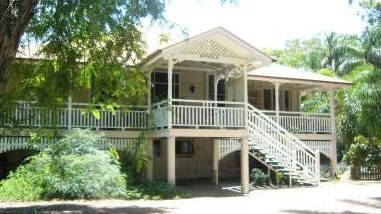
The transformation of Wynola was warmly received by holiday-makers, who visited in droves and left near perfect reviews. But the stress of the pandemic forced the couple to rethink their business – two other holiday homes have been sold and while Bee says she is too attached to part with Wynola, it is no longer available for stays. Instead, the family are considering making it their permanent abode. While nothing is finalised, there’s already been discussions on what is needed for it to become their forever home, with a pool and garage at the top of the list.
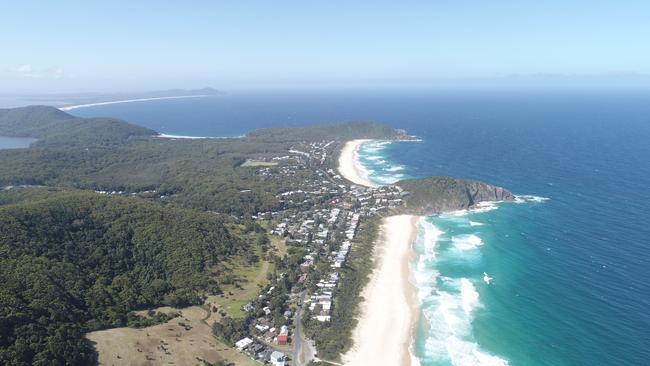
“I’m definitely not ready to let her go – I get teary just talking about it,’’ Bee said.
“We are really passionate about retaining history and these houses just have so much character. You can’t find original Queenslanders anymore. We don’t know if (living at) Wynola is going to work and, if it doesn’t, we can just holiday let again.
“But it will be interesting to live there – I don’t have a crystal ball but it would be wonderful if my great grandchildren are still there years from now. Heirloom homes are so unique and rare and it’s really nice to know their stories. I just feel so lucky that we were able to save this one.’’


